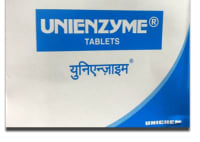USED FOR:
Bacterial infections
COMPOSITION:
Cefadroxil (250mg)
Clavulanic Acid (62.5mg)
Therapeutic Uses:
anti infectives

Interaction with alcohol is unknown. Please consult your doctor.

PROBABLY SAFE
Zadro CV 250 mg/62.5 mg Tablet DT is probably safe to use during pregnancy.Animal studies have shown low or no adverse effect on the foetus, however, there are limited human studies. Please consult your doctor.

SAFE
Zadro CV 250 mg/62.5 mg Tablet DT is safe to use during lactation. Human studies have shown that either the drug does not pass into the breastmilk in significant amount or is not expected to cause toxicity to the baby.

Do not drive unless you are feeling well.Zadro CV 250 mg/62.5 mg Tablet DT may cause side effects such as allergic reactions, dizziness or fits that may make you unfit to drive.

CAUTION
Zadro CV 250 mg/62.5 mg Tablet DT should be used with caution in patients with kidney disease. Dose adjustment of Zadro CV 250 mg/62.5 mg Tablet DT may be needed. Please consult your doctor.

Zadro CV 250 mg/62.5 mg Tablet DT is probably safe to use in patients with liver disease. Limited data available suggests that dose adjustment of Zadro CV 250 mg/62.5 mg Tablet DT may not be needed in these patients. Please consult your doctor.
Uses of Cefadroxil
Cefadroxil is used in the treatment of bacterial infectionsIt is used for short-term treatment of bacterial infections of urinary tract, skin and soft-tissue, blood, abdomen, genital and lungs (pneumonia). It is also used to prevent infections after surgery.
How to use Cefadroxil
Take this medicine in the dose and duration as advised by your doctor. Dissolve it in a glass of water before taking it.
How Zadro CV 250 mg/62.5 mg Tablet DT works
Cefadroxil is an antibiotic. It works by preventing the formation of the bacterial protective covering which is essential for the survival of bacteria in the human body.
Common Nausea, Diarrhoea, Allergic reaction.
Expert advice for Cefadroxil
Your doctor has prescribed Cefadroxil to cure your infection and improve symptoms. Do not skip any doses and finish the full course of treatment even if you feel better. Discontinue Cefadroxil and inform your doctor immediately if you get a rash, itchy skin, swelling of face and mouth, or have difficulty in breathing. Diarrhea may occur as a side effect but should stop when your course is complete. Inform your doctor if it doesn't stop or if you find blood in your stools. If you're on blood thinners, Cefadroxil can interact with your medications and increase your bleeding tendencies.
Q. Does cefadroxil, or Odoxil contain sulfa or a form of penicillin drug?
No, they do not contain sulfa or not a penicillin drug. They are cephalosporin antibiotics
Q. Can I take Cefadroxil for strep throat; bronchitis, sinus infection, tooth infection, yeast infection, or acne?
Yes, you can take Cefadroxil in strep throat; bronchitis, sinus infection, tooth infection, or acne but you cannot take it for yeast infection. Please consult your doctor for your medical condition before taking the drug
Q. Can I take cefadroxil with Nyquil (acetaminophen, dextromethorphan, doxylamine, and pseudoephedrine), Tylenol (paracetamol), ibuprofen, or Benadryl (diphenhydramine)?
Cefuroxime is not reported to interact with Nyquil (acetaminophen, dextromethorphan, doxylamine, and pseudoephedrine), Tylenol (paracetamol), ibuprofen, or Benadryl (diphenhydramine). Please follow the advice of the doctor regarding their simultaneous use
Q. Does Cefadroxil cause constipation or yeast infections?
Cefadroxil may cause yeast infections, but it is not known to cause constipation
Q. Is Cefadroxil safe?
Cefadroxil is safe if used at prescribed doses for the prescribed duration as advised by your doctor
Q. Does Cefadroxil need to be refrigerated?
Cefadroxil needs to be stored at 20° to 25°C.
Uses of Clavulanic Acid
Clavulanic Acid is used in the treatment of bacterial infections.
How to use Clavulanic Acid
Take this medicine in the dose and duration as advised by your doctor. Dissolve it in a glass of water before taking it.
How Zadro CV 250 mg/62.5 mg Tablet DT works
Clavulanic Acid blocks the action of the enzymes produced by bacteria to inactivate the antibiotics.
Common Diarrhoea, Indigestion, Rash, Itching, Vomiting.
Expert advice for Clavulanic Acid
Take clavulanic acid containing antibiotics along with food and with plenty of fluids.
Do not start or continue the clavulanic acid containing antibiotic tablets and consult your doctor, if you are allergic (hypersensitive) to clavulanic acid, penicillins or any of the other ingredients of this drug.
Do not take the drug without consulting your doctor, if you have kidney or liver problems.
Do not take the drug without consulting your doctor, if you have any serious allergic reaction (skin rash, inflammation of blood vessels, fever, joint pain, swollen glands in neck, armpit or groin, swelling of face or mouth [angioedema], difficulty breathing, or collapse).
Do not take clavulanic acid, if you have had penicillin-associated jaundice or skin rash, kidney or liver dysfunction.
Q. What is Clavulanic Acid?
Clavulanic Acid is a beta-lactamase inhibitor. It does not exert a clinically useful antibacterial effect on its own. It is used in combination with other antibiotics to increase their effect.
Q. What does clavulanic acid do when added to amoxicillin?
Amoxicillin is a semisynthetic penicillin (beta-lactam antibiotic) that is easily broken down by beta-lactamase enzyme produced by some bacteria. Clavulanic acid inactivates the beta-lactamase enzymes thereby preventing the breakdown of amoxicillin.
Q. Is amoxicillin/clavulanic acid combination effective against methicillin-resistant staphylococci aureus (MRSA) infections?
Amoxicillin/clavulanic acid combination is not effective against methicillin-resistant Staphylococcus aureus (MRSA) infections. Consult a doctor for the right choice of antibiotic for your infections.
Q. What are the side effects of amoxicillin/clavulanic acid combination?
Common side effects associated with the use of Amoxicillin/clavulanic acid combination are diarrhea, nausea, vomiting, and mucocutaneous candidosis. Talk to your doctor in case you experience these or other side effects while taking amoxicillin clavulanic acid combination.
Q. Is amoxicillin/clavulanic acid combination is safe in patients with a G6PD deficiency?
There is no study or research available regarding the safety of amoxicillin/clavulanic acid in G6PD deficiency. Talk to your doctor regarding its use in G6PD deficient patients.
Q. Is amoxicillin/clavulanic acid combination nephrotoxic?
Amoxicillin/clavulanic acid combination can cause kidney damage, especially if taken a dose more than recommended. Inflammation of the kidney tissue (interstitial nephritis), hematuria (blood in urine) and crystalluria (crystals in urine) has been reported in some patients. Always take a dose as recommended by your doctor and share your medical history of kidney disease if any when you are prescribed this combination.
Q. Does amoxicillin/clavulanic acid contain sulfa?
No, amoxicillin/clavulanic acid does not contain any sulfa substance.
Q. Do amoxicillin/clavulanic acid combination make you drowsy or tired?
Amoxicillin/clavulanic acid combination does not make you feel drowsy or tired. However, it can make you feel dizzy. Talk to your doctor if you have these symptoms while taking this combination.
Q. Is amoxicillin/clavulanic acid combination is effective against pseudomonas infections?
Amoxicillin/clavulanic acid combination is not effective against pseudomonas infections. Consult a doctor for the right choice of antibiotic for your infections.
Q. Where to buy Clavulanic Acid?
Clavulanic Acid does not have any antibacterial activity of its own and is not available as a single salt in the market. It is always available as a combination with antibiotics like amoxicillin, cefixime, and cefuroxime. Talk to your doctor before taking any antibiotics.
Q. Why does Clavulanic Acid cause diarrhea?
Clavulanic Acid iself is not known to cause diarrhea. However, it is always given in combination with a beta-lactam antibiotic and diarrhea is a common side effect associated with the use of this combination.
Q. What are the side effects of Clavulanic Acid?
Clavulanic Acid can cause hepatitis and allergy. However, since the drug is always given in combination with a beta-lactam antibiotic, there can be many side effects of this combination. Consult your doctor if you experience any side effects while using this combination.
Q. What is the dose of Clavulanic Acid?
The dose of Clavulanic Acid depends on the age of the patient and disease for which it is given. Consult your doctor for the appropriate dose, frequency, and duration of the drug.
Q. What is the mechanism of action of Clavulanic Acid?
Clavulanic Acid is a beta-lactamase inhibitor. It inactivates beta-lactamase enzyme produced by some bacteria and prevents the inactivation of the antibiotic when given along with it.
Q. What is the molecular weight of Clavulanic Acid?
The molecular weight of Clavulanic Acid is 199.16 g/mol.
Q. Can Clavulanic Acid cause allergy?
Clavulanic Acid may cause allergy but the chances of it causing an allergy is far less likely compared to the penicillins it is given along with. Consult your doctor if you have any allergic reactions while taking the drug.
Q. Can I take clavulanic acid with alcohol?
Clavulanic acid can be taken with alcohol. No interactions have been reported between the two. However, interactions can occur. Talk to your doctor regarding its use with alcohol.
Q. Can clavulanic acid be taken with cefuroxime?
Fixed dose combinations of cefuroxime with clavulanic acid are available in India. However, there is not enough research to prove the efficacy and safety of cefuroxime combined with clavulanic acid.
Q. Can I take clavulanic acid with penicillin?
Clavulanic acid is a beta-lactamase enzyme inhibitor which is available as a fixed-dose combination penicillin antibiotics like amoxicillin and ticarcillin. It is not available for use as a single agent. Talk to your doctor for further information on the same.
Q. Is clavulanic acid available in combination with cefixime?
Fixed dose combinations of cefixime with clavulanic acid are available in India. However, there is not enough research to prove the efficacy and safety of cefixime combined with clavulanic acid.
Q. Can I take Clavulanic Acid with food?
Food generally does not affect the absorption of Clavulanic Acid. The drug can be taken with or without food. However, there is evidence that a high-fat diet may interfere with the absorption of Clavulanic Acid.
Q. Can I take amoxicillin/clavulanic acid combination with paracetamol?
Amoxicillin/clavulanic acid combination can be taken with paracetamol (acetaminophen). No drug-drug interactions have been reported between the two. However, interactions can occur. Please consult your doctor before taking the two medicines together.
Q. Is clavulanic acid and sulbactam same?
Sulbactam is a beta-lactamase inhibitor like clavulanic acid. They do not have any action on the bacteria. Clavulanic acid is commonly combined with amoxicillin and sulbactam is commonly combined with ampicillin. They increase the antibacterial action of these antibiotics.
Q. Is clavulanic acid same as dicloxacillin?
Dicloxacillin is a beta-lactam antibiotic whereas clavulanic acid is a beta-lactamase inhibitor. Dicloxacillin is not combined with clavulanic acid since it is inherently resistant to degradation by beta-lactamase enzyme and would not need any inhibitor for increasing its action.
Q. Can I take amoxicillin/clavulanic acid combination with azithromycin?
The effect of amoxicillin/clavulanic acid combination can be decreased when given with azithromycin. Talk to your doctor before taking the two antibiotics together.
Q. Can I take amoxicillin/clavulanic acid combination with alprazolam?
Amoxicillin/clavulanic acid can be taken with alprazolam. No drug-drug interactions have been reported between the two. However, interactions can occur. Please consult your doctor before taking the two medicines together.
Q. Can I take amoxicillin/clavulanic acid combination with guaifenesin?
Amoxicillin/clavulanic acid can be taken with guaifenesin. No drug-drug interactions have been reported between the two. However, interactions can occur. Please consult your doctor before taking the two medicines together.
Q. Can I take amoxicillin/clavulanic acid combination with lisdexamfetamine?
Amoxicillin/clavulanic acid can be taken with lisdexamfetamine. No drug-drug interactions have been reported between the two. However, interactions can occur. Please consult your doctor before taking the two medicines together.


 Zadro CV 250 mg/62.5 mg Tablet DT
Zadro CV 250 mg/62.5 mg Tablet DT  Bookmark
Bookmark





















